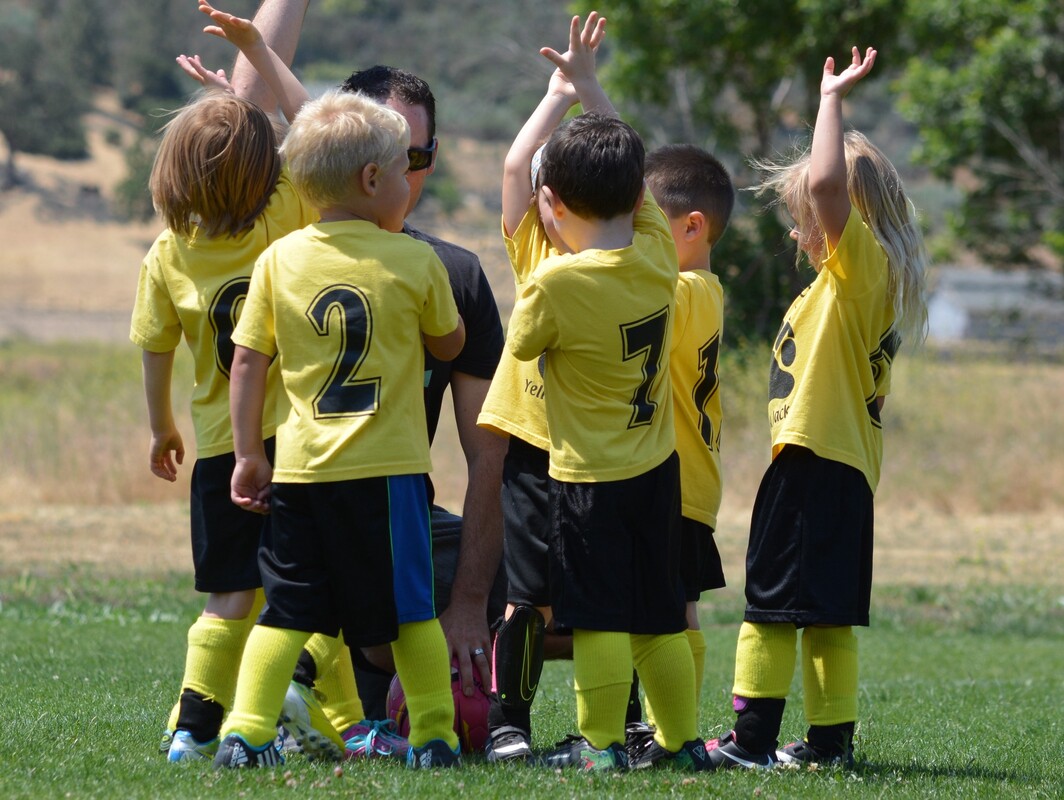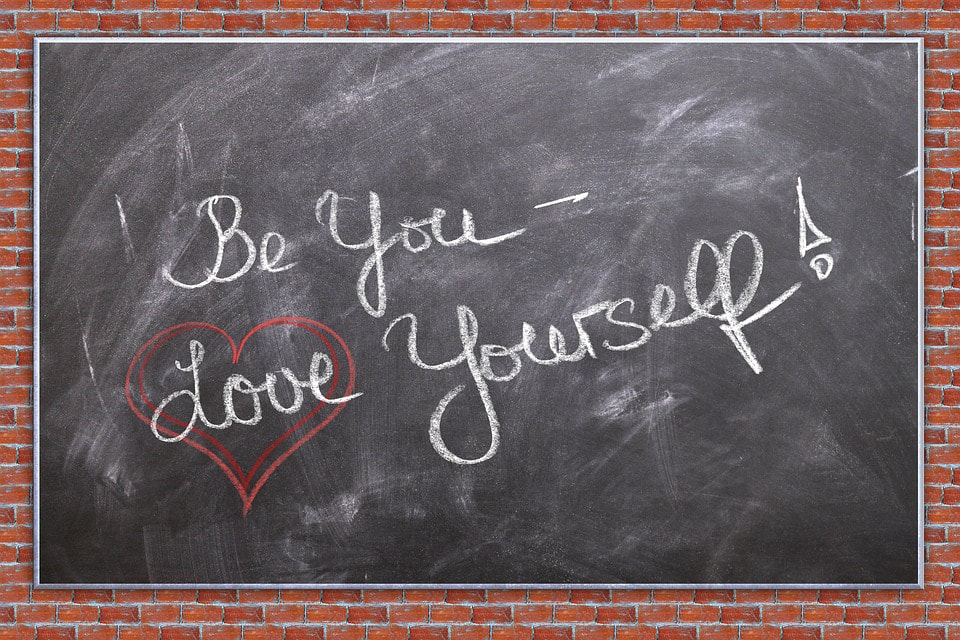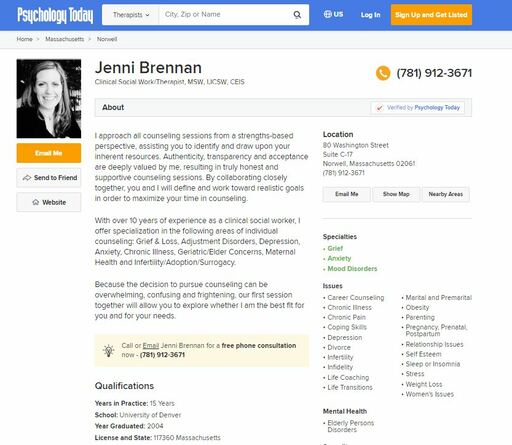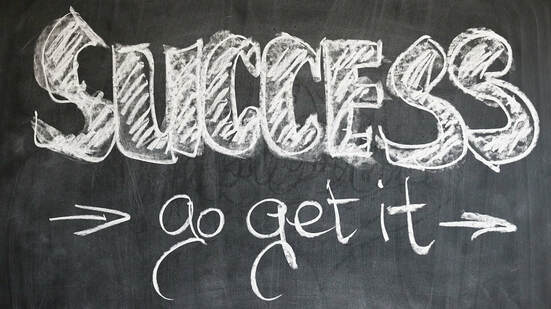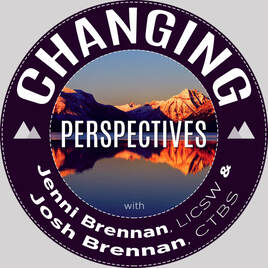Changing Perspectives Blog |

Online shopping and home delivery are two of my best friends in life. Need a last minute school supply and don't feel like sorting through half-empty bins at the local Target? Hop on Amazon.com and they can be at your door within 2 days. Need a gift for a party this weekend? Amazon will do that for you. Need someone to ship toilet paper to you every month so that you never run out? Amazon can do that.
You know what else Amazon is good for? Helping you manage your stress and anxiety. Honestly. There are lots of products available on the Amazon website that can be useful tools to have in your anxiety management toolkit and below you can find 7 of my favorites. Some of these links are considered "affiliate links," meaning if you click through these links to make a purchase, I might earn a small commission. Keep in mind that I link these companies and these products because of their quality and not because of the commission I receive from your purchases. All of these are products that I have used personally or professionally and many have also been successfully used by my clients and colleagues.
1. Weighted Blanket
Are you someone who likes a good hug or snuggling up under a warm blanket? Do you feel better when you can sit somewhere that makes you feel safe and secure? A weighted blanket provides all of those physical sensations. I first used weighted blankets over 25 years ago when I worked with children who had sensory processing difficulty. The blankets were heavier than your normal blanket and would help calm them and make them feel safe. I soon learned that they also worked for me, giving me an instant feeling of calmness even from holding the blanket on my lap. Today, weighted blankets are available in a variety of sizes from lap blankets to king size blankets and in a wide variety of weights. I promise you, a weighted blanket will quickly become your favorite item to turn to when feeling anxious and overwhelmed.
2. Essential Oils
I use essential oils all the time in my home and in my office. (For more information on how I use essential oils, visit "Seven Ways to Use Essential Oils.") When it comes to anxiety relief, there are essential oil blends specifically formulated to reduce stress, improve relaxation, and help you to calm your mind. You can use some of these oils topically (mix them with a carrier oil first such as almond oil) or even ingested. I prefer to diffuse a few drops of them in an essential oil diffuser. Just a few drops will help to ease any stress and anxiety you or your family may be feeling and it will leave the air smelling fresh!
3. Workbooks and Journals
If you are self-motivated, workbooks and journals can be a great tool to use to help you gain insight into the root causes of your anxiety. You can set some time aside each morning or evening to review a section and complete some of the worksheets included. Although not a replacement for one on one counseling, workbooks and journals like the ones below can be an excellent way to help you start to gain control of your anxious feelings.
4. Zen Garden
If you have ever seen these tabletop Zen Gardens, you know how calming it can be to allow yourself to do nothing but rake the sand and lay out the decorative rocks. Adding one of these to your desk at work or to a tablespace at home will provide you with a daily reminder to slow down and breathe.
5. At Home Fitness
One of the most effective ways to combat anxiety is to find a way to release some of the pent-up anxious energy. Exercise is a perfect way to do this. If you don't have time or the funds to go to a gym, there are lots of ways that you can work out right in your own home. Cardio has a lot of benefits when it comes to anxiety management so a simple home exercise machine like a rower or a stationary bike can be a good addition to your routine. You can get one delivered to your door for less than $120. That's a small price to pay for some anxiety relief.
6. Adult Coloring Books
There is something very calming and relaxing about coloring an intricately designed picture. I'm not talking about cartoon character coloring books like we had when we were young. These coloring book options for adults are meant to take some time and are even more enjoyable when done with a set of good quality thin tip markers or colored pencils. This is an activity you can do with others too. So, grab a few friends, put out some refreshments and get your coloring on! Watch as your anxiety starts to drift away.
7. Bath Bombs
You either are a bath person or you've never actually had a good bath. A nice hot bath at the end of a long day can be a great way to quiet your mind and increase your relaxation. Bath bombs can make the experience even more beneficial by adding some calming fragrance and skin softening properties to the water. Don't like bath bombs? Try bath salts or take a bubble bath. No matter how you prefer your bath, make some time to pause from your daily hustle to slow down and relax.
Wouldn't it be great to feel like you have a bit of a better handle on your anxiety? Can you imagine your life without the weight of anxiety always looming over it? Isn't it time to add to your anxiety management tool kit? Go ahead and invest in yourself!
0 Comments

When I became a parent nearly 14 years ago, I knew absolutely nothing about parenting. I’d read all the baby books, perused all the baby websites, signed up for the weekly emails about my baby’s development and yet still was woefully under-prepared for what it would take to be a mother. Not much has changed since then. I still feel inadequate most days as I stumble my way through the maze of parenthood. As my oldest approaches his 14th birthday, I find myself amazed by how much he has changed in just one year. Facebook Memories and Timehop remind me almost daily that every day he steps closer and closer to adulthood, slipping further and further away from childhood. Blinking back tears, I look at him today, amazed at the young man he has become and I am humbled by just how much he has taught me during his 13th year: 1. Hold on loosely, but don’t let go It turns out that 80’s bands gave us more than just good music — they gave us solid advice to live by as parents. My 13 year old has taught me this year that while I need to hold onto him and continue to guide him, I can’t cling too tightly. He needs space to find himself and that means space to make his own mistakes. If I hold too tightly, he’s never going to learn how to make it as an adult. 2. Hit the Whoa Every year there is some new “dance” that takes over on Tik Tok and You Tube. If you’re lucky, your 13 year old will tell you about it, teach you it, and then tolerate you when you are in public and try to show off your skills. I’m still not exactly sure what the Whoa actually is though… 3. Be honest with friends Middle school has been rough for me as a parent this past year, as it turns out that middle school drama doesn’t really stop when you leave middle school. It all rears its ugly head again when you become a middle school parent. During moments this past year when my 13 year old caught wind of such drama, he was always very matter of fact and eager to offer advice to me. He always encouraged me to “just talk to them” and be honest. His message — if they are your friends, they’ll understand. 4. Hard work pays off This past year has seen my 13 year old face a significant arm injury, requiring lots of visits to specialists for testing, physical therapy, and sports restrictions. Pain, daily ice massages on his elbow, strengthening and stretching workout and playing baseball with his team while not really be able to do anything more than swing a bat sometimes would be a lot for any adult to manage, let alone a teenager. But he persevered and was able to finish the final few games of the season without any restrictions. I think most adults, myself included, would have given up. 5. Don’t sweat the small stuff You can learn a lot from how 13 year old boys handle conflict. While they have their share of disagreements with their friends, get hurt, and have drama, they are quick to let it go and move on. They don’t sweat the small stuff. They let it roll of their backs. We could benefit from doing more of the same as adults. 6. Teen music is great for working out I think every generation has a “I can’t believe what those kids are listenting to for music these days” moment. But, it turns out, if you are open minded and let them play their music for you, you just may find yourself asking them to add some of those songs to your workout play list. The music those crazy kids are listening to these days is great for cardio and weights at the gym! 7. Sleepovers are the worst I thought sleepovers would get better as they got older. They don’t. Although they can regulate themselves and then recover a bit quicker than my 10 year old when it comes to going to sleep at a normal time, now that they are teenagers the responsibility of hosting becomes so much more stressful for us as parents. Are other kids bringing in vapes, drugs, or alcohol? Are they going to try to sneak out? Are they doing something on social media that might hurt other kid’s feelings? Nope. Sleepovers for 13 year olds still suck. 8. Disney is magical, even for teenagers Our family has always loved taking trips to Walt Disney World. Each time we go, we wonder “Is this it? Are they too old for the magic?” It turns out that 13 is not too old! As we were walking out of Epcot park at the end of an evening in Disney last month, my 13 year old leaned over to me and said, “Mom, even though we are older now. Doing this is still a lot of fun.” I tried to give him a hug as tears started forming in my eyes but that was quickly shot down as hugs are a bit of a rare commodity for some teens. 9. Hugs are the greatest gift When my son was little, he was a great hugger and snuggler. Now, hugs are much harder to come by. But, when I do get a surprise hug hello or thank-you or as a comfort, it is one of the greatest gifts ever. I wish I hadn’t taken all those toddler hugs for granted, I never knew how much I would miss them. 10. Teenagers can navigate Earlier this month we went tubing down a river in New Hampshire with a large group of families. It was 5 mile river float and we let the group of teenage boys float off together ahead of the adults. Many of us worried that they wouldn’t be aware enough to see the tiny sign that would indicate it was time for them to get off the river. When we rounded the bend and saw the beach with the sign, the teens were nowhere in sight. I immediately wrote them off, assuming they missed it but I could not have been more wrong. Not only had they seen it, but they had returned their floats to the rental place and were waiting together for us near our cars. 11. Car rides are special Joining a travel sports team has meant lots of long car rides over the past year and although those often meant waking up early and staring at headlights for 2+ hours, they also mean that I got to ride side by side with my 13 year old, trapped in a moving box. Just us. Something special often happens on those long car rides. The air shifts just a bit and he begins to open up about his life, his friends, his feelings, his fears. I love those car rides now. 12. Teens have instincts too One of the biggest lesson I’ve learned from my 13 year old is that just because we, as adults, are older, doesn’t necessarily mean we are wiser. Teenagers are humans too and have some gut instincts that sometimes are spot on. It’s important to give them a chance to use their voice and share their instincts. Being able to tap into that insight will help them immensely in their adulthood. 13. We need more cereal One of the primary sources of fuel for 13 year old boys is cereal. It could be a meal for breakfast, lunch, dinner, or a snack and teenagers eat it by the boatload. My 13 year old has taught me to assume that we always need more cereal. If you see me at any store these days, I can guarantee I have some cereal and milk in my cart. There are whole sections of bookstores devoted to the topic of how to parent a teenager. You could read every single one of those books and still feel unsure of yourself as you navigate the waters of parenting a teenager. But, I’m learning that the best way to parent them is to see them, hear them, and accept them for who they are right now…and feed them lots and lots of cereal.
Jenni, stop! You’re overthinking it!
My friend’s words snapped me out of my anxious thought pattern and brought me back to reality. Nothing about my situation required me to be overthinking anything. I took a deep breath, closed my eyes for a moment, and then opened them, taking in the full scene before me. It was a sunny summer day without a cloud in the sky. I was spending my Sunday morning lounging in an over-sized inflatable tube, tethered to a group of over two dozen of my friends and their children, all in their own individual tubes, as we floated lazily down 5 miles of a river in New Hampshire. The air was filled with the sound of laughter as music from a speaker in a waterproof pouch provided the soundtrack. Other groups in kayaks and tubes drifted by us, everyone smiling and waving at each other. What could there possibly be to overthink? Bags were stowed safely in inflatable rafts of their own, complete with sunscreen, dry towels, cell phones, empty trash bags, and snacks. Even our coolers filled with ice-cold beverages had their own floats, some with very useful cup holders. We could take as much time as we wanted floating down the river back to our cars. We could stop whenever we wanted and rest on a beach at the river’s edge. Everything about the day was laid back and care free. Except for me. Again. Just one day before our river tubing trip, my husband, our two sons, and I rode a gondola to the top of a New Hampshire mountain where we took in the breathtaking scenery and prepared to eat a picnic on the mountaintop. As I was taking a photo of the view, my 10 year old found a sign near a trail that indicated it was part of the 2200 mile long Appalachian Trail. Let’s hike it! My 10 year old proposed the idea with a huge smile on his face, a smile I don’t see quite as often now that he is approaching his teenage years. Instantly I began overthinking it. But we don’t really know where it goes…We were going to take the gondola back down….We have our lunch with us…I don’t know how hard the trail is…What if someone gets hurt… My 10 year old son and my 13 year old sons looked at me and sighed. Come on, Mom! It’ll be fun. We’ll just go in and when we want to be done, we’ll turn around and come back out. This was a magical moment, my two sons were wanting the same thing and weren’t arguing about anything. Just then my husband came up behind us and when the boys told him their plan, he shrugged his shoulders and said, Cool. That was it. No overthinking. No “what if…” Just, “cool.” In that moment, I desperately wished I could be more like the three of them — carefree, able to be in the moment, not anxious. So, I pushed all my fears aside and we headed into the trail. The thoughts continued inside my head during our hike but I kept them to myself, determined to not let them ruin my day or anyone else’s day. It turns out the hike was pretty strenuous. We were climbing up rocks, jumping down over structures, and had a few stumbles. But, we shared a few laughs, got to help each other with the climb and descent, and enjoyed the time on the trail. On our way back to the top of the mountain, we met a woman who was hiking with two companions, each over 70 years old. She shared that they had hiked nearly all of the segments of the Appalachian Trail in their lifetime and this particular part of the trail and one other in the area are all they had left to complete. There’s no way they were overthinking it. They were living their best life, climbing a flipping mountain at over 70 years old. Yet there I was, in the middle of a mountain, and then in the middle of lazy tubing trip down a river, overthinking all the small stuff. If I had listened to my anxious thoughts on that mountain, I wouldn’t have the amazing memories my family now has from that trail. I wouldn’t have heard the story about that couple in their 70’s. We wouldn’t have been so interested in the Appalachian Trail that we would read about it later as a family. If I had listened to my anxious thoughts on that river, I wouldn’t have laughed so hard that my stomach was sore the next day. I wouldn’t have found the humor in so many memories from that day, even when our group of tubes got caught on some mini rapids and we needed to work to free ourselves. My overthinking almost stopped me from fully living in so many moments on that trip. So, here I sit, overthinking my overthinking. Is it possible to leave my overthinking tendencies at home on my next vacation? Could I add “hide the overthinking” to my pre-vacation To Do List? Could I at least tuck it away in my suitcase and just leave it there during the trip like all the unused “just in case” shirts and outfits? I’m not quite sure of the answer but what I do know is that even if my anxious thoughts tag along on my next vacation, I don’t have to listen to them. I don’t have to believe them. I don’t have to give them power. I don’t want to let them keep me from fully enjoying my vacation, my family, my friends, or my life. Instead, at least for now, I can simply keep telling myself, Jenni, stop! You’re overthinking it!
Recently, video surfaced of a physical fight that broke out between parents at a baseball game for 7-year-old children in Colorado. The cause of the fighting? Parents of the players disagreed with the 13-year-old umpire’s decisions. As video of the incident circulated over social media and even national news outlets, many people appear to be shocked that adults would display such terrible (and illegal) behavior over kids playing a youth sport.
I’m not shocked. Not even a little. As the parent of a 13-year-old baseball player, I have spent years watching the antics of parents at youth sporting events. Although I’ve never seen a full on brawl between the adults, I have seen parents, coaches, and even grandparents be ejected from games for heckling and arguing with child and volunteer umpires and referees. I’ve seen adults have to step between coaches and parents before fists started to fly. I’ve seen people’s cars get keyed by other parents over disputes that happened between their kids on the field. I’ve seen parents encourage their 8-year-old child to “get back” at another player by trying to deliberately hurt them. I’ve seen friendships and entire youth sports volunteer boards be torn apart because of disagreements about a game. So, when I see video of parents resorting to violence, I’m not even a little surprised. Bad behavior from adults is one of the primary reasons why my son will never ump a baseball game without one of his parents there — just in case the adults lose sight of the fact that they should be acting like adults. What is the cause of such behavior from adults? Perhaps it is all the stuff lurking beneath the surface. Maybe it’s the murmurs on the sidelines, the passive aggressive posts on social media, or the tendency of adults to try to pull the kids into their adult drama that creates this pressure cooker environment. Eventually all of this build-up leads to total chaos from the adults involved with youth sports. In short, adults simply are forgetting to be adults. Just last week while I cheered on my 13-year-old son’s flag football team, the mom standing beside me called the coach (my husband) the “R” word. Yes, the “R” word. Her friends standing with her quickly leaned in towards her, whispering and motioning towards me, clearly encouraging her to be quiet as the coach’s wife was standing within ear shot. “Oh I know. I don’t care,” she said in response. Nice. Her son is good friends with my son and she and I are Facebook “friends.” Had I not been able to have the wherewithal to take some deep breaths, find a way to have compassion for her lack of understanding, and excuse her poor choice of words, people would have seen a very ugly version of myself. A few days later, I sat in a restaurant for a birthday dinner with friends and suddenly the party went to shambles as another adult approached our table and began arguing with one of the party-goers. Restaurant patrons turned to stare, members of our party left abruptly, and I wouldn't have been surprised if fists had started to fly. What were they arguing about? What else? Youth sports. In a restaurant. At a dinner party. The truth of the matter is, I’ve been in the shoes of these adults that lose their cool. I’ve stood on the sidelines and wondered why my kids weren’t playing as much as others. I’ve seen coaches favor their own kids and restrict kids from playing as a way to get back at them for something unrelated to the game. I’ve been frustrated. I’ve asked questions. I’ve had strong feelings towards coaches and other parents. I’ve wanted to approach other parents and coaches in public and tell them what I really think of them. But, I don’t. I’ve never stood on the sidelines and loudly called someone the R word. I’ve never been kicked out of the stands. I’ve never resorted to physical violence. It’s hard in times like these to not just pull my kids out of every sport and move on with our life. But, the kids love it. At the end of the day, they don’t care much about bad calls or playing time or winning and losing. They don’t care about taking sides in a town-wide battle between parents who disagree about a selection of a coach. They just want to have fun. They just want to be kids. If we look hard, beyond the headlines of brawls at youth sporting events, beyond the passive aggressive social media posts, beyond the sideline comments, we can still see the heart of youth sports. Despite all the drama perpetuated by parents, at the core, youth sports are still a magical thing. During this same week as the baseball game brawl, sideline “R” word, and the restaurant argument, I also bore witness to some pretty amazing moments. An 11-year-old fell into the end zone to catch a game-winning touchdown pass and ran over to the stands, huge smile on his face, shouting “Mom!!!! Did you see that??? I caught it!! We won!!” It was pure joy for that little boy, his mother, and his entire team. Even the adults cheering for the other team were smiling back at the boy. I also witnessed a 13-year-old baseball player who had been having strike out after strike out the past few weeks finally hit a bomb to left field that drew every parent and kid to their feet and resulted in another huge smile from a child, his parents, his teammates, and the adults around him. I read a story about a baseball team, umpire, and coaches who decided to let a pitcher with a broken leg enter an inning for one batter to be able to say he played in a very important game. My own son, who has been restricted from throwing for the past 8 months due to an injury, finally got the clearance to start a return to throwing program and was able to warm up the right fielder before this weekend’s games. A small step, but huge for him. Even the adults around him made note and congratulated him. They knew how big of a deal it was for him and for his team that he was able to begin returning to the game he loves. I witnessed friendships being formed and strengthened on the sidelines between parents. I witnessed volunteers giving up their nights to run scoreboards for championship little league games and announce players names over the speaker. I witnessed childhood happening all around me and it was truly spectacular. These moments, the ones filled with pure joy and heart, not the moments filled with drama, are the ones that define youth sports. These are the moments that deserve to be circulated on social media and the evening news. These are the stories that matter. These are the stories that prove that we have not lost at youth sports, after all. The magic is still there. Sometimes we just have to look a little harder for it.
Fourteen years ago I was pregnant with my oldest son and I spent all my free moments devouring every baby book I could get my hands on. I bookmarked websites about babies and child development, confident that I would now know where to turn for guidance along every step of my parenting journey. I joined online groups with other mommies to expand my social network and find potential support resources. I prepared and prepared and then prepared some more.
But, all those books and websites failed to tell me something important; something that would make me cry rivers of tears sometimes and would keep me awake some nights. They never told me the reality that I would lose my baby, my toddler, my sweet impressionable elementary school little boy over and over again. I would grieve a million little losses all before he even learns to drive. As I sat and watched my youngest son perform in his annual end of the school year concert yesterday, I was hit with a pang of thick sadness. In that moment, I realized he has only one more year left in his elementary school experience. We are almost at the end of this chapter of his life and the pages are turning super fast. Too fast. Watching him on the stage called my memory back to when my oldest son was on that same stage singing songs about summer vacation and growing up. Where did that time go? Now he’s closer to graduating high school and going to prom than he is to boarding the kindergarten school bus for the first time or holding my hand in public. While I love the young men my boys are becoming, my heart aches for the babies I used to have. Those babies that played with my long hair as I nursed them, fell asleep as I sang them lullabies, and squealed with delight when I would make a funny face at them are no longer here. They are gone. Sure, they are forever lodged in my memories and in online photo albums but I will never see them again, never hold them again, never kiss their sweet heads covered in soft baby hair again. Those toddlers that sat in between me and my husband on Disney World rides, grabbed our hands, looked up at us with nervous anticipation and asked in raspy little voices, “ready mama daddy?” have left our lives forever. The bright eyed and naive first and second graders that bounded off the bus each day after school, eager to show us their drawings and asking to snuggle with us while watching a cartoon don’t live with me anymore. Those babies. Those toddlers. Those young school children. Gone. None of the baby books or websites or mommy groups told me about these losses. No one prepared me for how many times, like yesterday’s concert, the realization of the little boys I no longer had would hit me like a ton of bricks out of nowhere. No one gave me a heads up for the real pain I would feel when I realize they are forever changed and the former versions of them no longer exist. Don’t get me wrong. I love who my boys are now. There are so many amazing moments that fill me with joy as I parent my teen and my tween; moments that make me think that these versions of them are my favorite. Lurking at the back of my mind, however, is the knowledge that these versions of them too will fade away, and I will mourn their loss again. As I watched my oldest son on the baseball field and heard about my youngest son making amazing saves as goalie at his lacrosse game today, I made a conscious decision to savor these moments. I took mental snapshots of today’s version of my boys and sat with the realization that these versions are fading before my eyes. As other parents around me complained about the baseball game taking too long or their kids making errors, I leaned into the extra time I got to spend watching them today, choosing to focus on taking in every aspect of my boys and who they are today. Because now I know. There are still a million more little losses to come. “Get over yourself.”
“Stop being so sensitive.” “Let it go.” “You’re too needy.” That was the message I received the other day, before I had even left my bed. Ouch. I had decided to take a few minutes to read through my social media pages before officially starting my day. As I laid there groggily scrolling through my friends’ updates, I came across an article on friendship. Without a moment’s hesitation, I opened the article. In the words of Julia Roberts, “Big mistake. Big. Huge!” The overall theme of the article was pretty clear: sensitive friends take too much time and energy. The author of the article had come to the conclusion that it was time to turn away from those relationships, choosing instead to focus on friends that were more secure in themselves and didn’t require so much attention. To me, a sensitive person, the words stung. I identified with the friends the author was letting go of because they were “too sensitive.” And, just like a sensitive person, I took the article to heart. I allowed my interpretation of the article to set the tone for my entire day. The words echoed in my head as I got my kids ready for school and myself ready for work. The words brought back all the feelings that I’ve struggled with for so much of my life, struggles that I see lots of others face too: the push to conform and be something or someone different to make others happy; the push to hide who you really are because who you really are is just not right. The truth is, it can be difficult to be my friend. It takes a lot for me to actually let a new friend in and then once I do, I have pretty high standards. I want to be included in things. I want my friends to be honest with me, even if it’s difficult. I also need my friends to understand that sometimes, as an introvert, I get overwhelmed with too many social activities, crowded places, or as my niece calls it, when things are “too people-y”. Sometimes I retreat and go dark for a bit. Sometimes my own depression and anxiety rear their ugly heads and I can’t get out of my own way. I need friends who won’t judge me during those times or tell me to “just be happy.” I also need my friends to take ownership and apologize when they’ve done something that hurts me, whether intentionally or unintentionally. I am a complete juxtaposition of a person at times. To be friends with me is a lot to ask of someone. I get that. But, does any of that make me a bad person? A bad friend? Am I wrong to feel the way I feel? Am I out of line to approach friendship the way I do? Am I too sensitive? I think for most of my life, I answered “Yes” to all of those questions and allowed myself to feel shame for who I am as a person. But, as I contemplated that article, I began to wonder not just about my own potential shortcomings but those of the author. What about her? Could it be that she and all of the people that liked and shared the article were wrong? Is there something wrong with them? Are they out of line to approach friendship that way? Are they too abrasive? Are they not sensitive enough? Which of us is right? Which of us is the better person? I’ve chewed on this question for the past few weeks, weighing out the benefits and drawbacks to each personality style and approach to friendship. While being the way I am has certainly posed challenges to those in my life and to myself, it also has probably led me to where I am in life. It probably makes me a better clinician. It probably makes me better able to understand the pieces of my children that are just like me. It probably has allowed me to feel things, not just bad things, but good things as well, on a deeper level than others that aren’t quite so sensitive. It probably is what allows some of my friendships to feel so very deeply rooted. Would I really want to be a version of myself that didn’t have these components? I don’t think so. Does that mean that I am fully grown and have reached enlightenment and can’t improve as a person? Absolutely not. I think I can be someone who still wants to improve and grow AND can also still be someone who can be proud of who I am. So, which of us is right and which of us is the better person? Neither. In the weeks since I allowed that article to punch me in the gut, I’ve come to believe that friendships come with a price, just like most things in life. When it comes to friendships, all of us have a budget of emotional energy to invest in friendships and it is up to us to decide how we spend it. We can decide whether the cost is worth the return. For some people, what it costs to be my friend might be too much for too little in return or they just may choose to use their budget differently. The author is probably one of those people and that’s ok with me now. I get it. Her decision doesn’t mean that anything is wrong with me. It doesn’t mean that I actually need to stop being so sensitive or need to get over myself and my feelings. It just means that we aren’t a good fit for each other. So, to those of you that have been told you are too sensitive, let me tell you this: you keep on being you. To those of you that don’t want to be friends with someone like me, you keep being you too. Neither one of us is wrong. Neither one of us is better than the other. Neither one of us is more well suited for life or for friendship. It turns out that what some may see as our flaws or weaknesses may actually be our greatest strengths and assets.
If you are like most people, the term “self-care” has a way of making you roll your eyes. Just last week I read a viral post on social media blasting medical professionals for encouraging patients to practice good self care. Yet, here I am. About to tell YOU to do the very same thing.
So many people have fallen prisoner to the fast paced nature of our lives. We wake up and immediately rush head first into the day. Many of us don’t even have time to sit and eat our breakfast, opting instead for breakfast in the car or not at all. We field phone calls and texts on our way to work or while shuttling the kids to school, shout reminders at our phones, and consider it a luxury when we can take a quick break to use the restroom. The evening routine is much the same, especially for those of you with busy children. It’s a sprint to the finish line of the day, scrambling to get dinner tossed on a table, wrapping everything up for the day, and preparing to do it all the next day. Then our day comes to a screeching halt as we climb into bed and wonder why we can’t seem to be able to fall asleep. Sound familiar? Recently a patient came to me with her head hung in shame as she shared that she has been spending time exploring a new hobby. This new hobby isn’t taking any time away from her family or her responsibilities yet it seemed to her as it had no real value. It wasn’t earning her money. It wasn’t teaching her a new skill. It wasn’t helping anyone. It was just fun. And she felt guilty for having fun. For many of us, we’ve forgotten how to give ourselves permission to slow down, have fun, breathe, and enjoy life. We need to change our perspective on priorities in life and it starts with our own lives. I challenge each of you to take some time and consider how you can implement at least a few of these 9 strategies for improving self-care: 1. Practice healthy sleep hygiene How do you approach sleep each night? If you are like most people, you finish whatever tasks need to get done for the evening, brush your teeth, change your clothes, hop into bed and then pick up your phone or turn on the tv. I get the temptation. Scrolling mindlessly through social media or perusing blogs like this one can certainly help us to calm down and make us FEEL like we are preparing ourselves for bed. But, truthfully, these actions are examples of poor sleep hygiene. We don’t chomp on sugary candy while we are brushing our teeth, right? So, why are we activating our brains with electronics when we are trying to get ready for sleep? Take stock of your bedroom. Could you add an essential oil diffuser, salt lamp, soft lighting via lower watt light bulbs or even flameless candles? How would some relaxing music make you feel at night? What about reading a book (a real book, or on a kindle – not a tablet with harsh lighting)? Think about how we approach bedtime for babies. We turn down the lights, soften our voices, turn on some white noise, darken the room and just make everything a bit cozier. What would happen if you did the same for your own sleep? 2. Nourish your body I know that you know what foods fuel your body well and what foods you eat because they are convenient and/or satisfy you emotionally. Can you make a commitment to increase your focus on nourishing your body in at least one concrete way? Can you make a concerted effort, for example, to increase your water intake or decrease your soda intake? How would it feel to cut back on your sugar consumption or limit your fast food trips? These changes don’t just happen magically. They need planning. I encourage you to pick one small goal to better nourish your body, write it down and figure out how to stick to it. After a week, check back in with yourself and see how you are feeling. 3. Get moving Here we are. We are at the part of the list where people start scoffing and scowling at their computers and phones. “If I HAD time to exercise, I wouldn’t NEED to be reading an article on how to improve my self-care!” I get that. I know how minimizing it can feel when someone tells you that if exercise is important to you, you’ll make time for it. I know that there are many of you out there who literally cannot find time or the funds to go to a gym or invest in workout equipment at home. I’m not one of those people that will try to shame you into making it work. What I will ask you though, is can you find 5-10 minutes a few times each week to go for a walk during your lunch break or in your neighborhood? What about while waiting for your children’s games or practices to start? Could you pop on a Zumba, yoga or dance video on YouTube or download an exercise app that will guide you through a quick routine a few nights each week? What would it take to get you to invest just 5-10 minutes in yourself, not to lose weight or burn calories, but just to get moving and give you a break from working and thinking? 4. Get some fresh air If you want to be super efficient, you can combine tip #3 and tip #4 so that you are getting moving while outside and getting some fresh air ? Even if you are not moving while getting the fresh air, though, just the act of being outside for a few minutes can reap great rewards. Take a few moments to really breathe in the fresh air. What do you hear? What do you smell? What do you see? Is there a spot at your house or at work or in your neighborhood or outside a coffee shop where you could just sit for a few minutes? Extra challenge: don’t look at your phone while doing it. Just be. 5. Remember that “No.” is a complete sentence We are so quick to say no to ourselves. "No, I can’t take a break." "No, I can’t buy that for myself." "No, I can’t take that trip with my friends." "No, I can’t upset my boss or my coworkers." What would it take for you to give yourself permission to live by the rule that “No.” is a complete sentence? Are you saying yes to people because you feel like you have to? Consider saying no. You can even add filler to the sentence and even add and apology: “No, I’m truly sorry but I can’t.” I’ve seen this shift in thinking become monumental for people. The next time you are asked to do something that you really don’t want to do, think about whether you really NEED to do it. Is it truly worth it? If not, it’s ok to say “No.” You don’t need a “good enough” reason. What do you want to say "No." to in your life right now? 6. Stop the negative self-talk I explore this concept a lot with my patients when I first meet them and they almost always deny that they do it. “No. I don’t do that. I don’t talk badly about myself.” But, then we get to talking and I start to hear things like “I’m so crazy.” “I don’t know why I do this to myself.” “Ugh. I was so stupid.” “I hate that I’m such a screw up.” Each time it happens, I encourage them to lean into it, to turn that inner negative voice up for a week and really listen for it – not to believe it but to understand where and when it comes into play. Most times, they are shocked to then find that they have a pretty constant loop of negative self-talk running through their heads almost everyday. The first step in stopping that loop is to identify it. Do you have one? Catch yourself next time you find yourself beating yourself up. Would you say something like that to a friend? Probably not. So, why is it ok to be so mean to yourself? Whenever you catch yourself doing it, counter that negative thought with a positive one. For example: “Ugh. I was so stupid. I can’t believe I did that!” can be countered with something like “Ugh. I really am feeling badly about what happened. I have to remember that I am a human and will never be perfect. I will do better next time.” 7. Start a gratitude or reflection journal When our heads hit the pillow each night, so often our brains start reminding us of all the things we did wrong or didn’t get done. A good way to dull this noise is to prevent it from even starting. At the end of the day, spend a few moments writing in a gratitude or reflection journal. This can be as fancy as a beautiful leather journal with handmade paper or as simple as a cocktail napkin with some scribbled notes or even a note on your phone. Use whatever method is easiest and most meaningful for you. Write down at least 3 things that you are grateful for and/or that you are proud of. Maybe you drank enough water today. Maybe you went on a walk with your kids. Maybe you put down your phone and sat outside with a cup of tea. Maybe you cleaned out a closet. Maybe you had fun with some great friends. Bringing our attention and focus to the positive can be such a healing way to end our day. 8. Play! I’ve had the great honor of being present with people as they approach the end of their lives. Not a single one has ever told me that they wished they worked more, took less vacations, spent less time with the people that made them happy, or that they regretted the fun moments in their life. Not a single one. Yet, our priorities are so often around work and obligations, making other people money and other people happy. While I’m not at all encouraging you to quit your job or leave behind everyone relying on you, I am telling you that it is ok to give yourself permission to play. Have fun! What would be fun for you? Make it happen 9. Schedule time for yourself and hold it sacred Take a look at your calendar. When can you squeeze in some time to get moving, get some fresh air, take a bubble bath, read a good book or just take a nap? Find it and book it. Pencil it into your own schedule. No, PEN it into your own schedule and hold it just as sacred as you would an appointment for your children or a meeting with your boss. This means you have to be truly mindful when you initially schedule it but then, no changes! Start small – just a 5 minute block is more than you are doing now. Article by Mark Tyrrell of Hypnosis Downloads.com. Improve your self confidence in 15 minutes I used to be frighteningly under confident in social situations. And although people who know me now would never believe I used to doubt myself so much I literally had to learn confidence until it became a natural part of me. I can tell you relaxed optimistic confidence is just, well so much more fun. Here I'll tell you about the things that made the most difference to my confidence levels... Some people have naturally high levels of confidence but everybody can learn to be more confident Firstly, it's important to get a clear idea of what self confidence really means, otherwise you won't know when you've got it! So, self confidence means: 1) Being calm. For every situation in life you need to run on the appropriate level of emotion. Too much emotional 'leakage' into a experience can spoil the experience. You make great strides towards confidence when you begin to relax in a greater range of situations. 2) Being cool. The second part of self confidence is about being able to relax with uncertainty. To be 'cool' in a situation really means relaxing with not knowing how things will pan out. If you truly tolerate uncertainty, you can do pretty much anything. 3) Not being too concerned with what others think of you. You know when you imagine what some place is going to be like before you go there but when you get there it is totally different to your imagination? That's how reliable your imagination is! Stop trusting your imagination so much. I've long since stopped bothering to imagine what others think of me because so often I've turned out to be wrong. 4) Being specific - where do you want confidence? 'Confidence' is meaningless until you tie it to something specific. You are already confident that you can read these words or can switch a light on and off. So you don't need more confidence everywhere. To get what you want in life you have to establish exactly what you do want. Where do you want confidence in your life? Think about the specific situations now and write them down. You beginning to steer your brain towards confidence. 5) Understanding that what you expect is what you get. Your brain is an organ that needs clear goals to work towards. When a task has been set in your brain it will do everything it can do to bring about the completion of that task. If you've tried to recall someone's name but can't, hours later you'll often find their name pops into your head. The 'trying to recall' experience set the task or blueprint for your brain's future subconscious behaviour which eventually produced the name for you - when you weren't thinking about it consciously. You can use this natural mechanism to start feeling more confident. But, to ensure you set the right task for your subconscious mind, the next point is vital. 6) Don't task your mind with negatives. Instead of: 'I don't want to screw up' (which sets the task of 'screwing up' for your brain), set the blueprint for what you do want! Your brain doesn't work towards what to do by being told what not to do. And nature has given you a wonderful natural tool to set the right task blueprints with. 7) Use nature's goal-setter: Now you understand how vital it is to set the right task for you brain, you need to know how to do this reliably. Good hypnosis will strongly 'program' the right blueprint in your mind through the use of your imagination. If you powerfully imagine feeling confident and relaxed while in a relaxed hypnotic state it will be hard for your unconscious mind to do anything else. The blueprint for relaxation has been set firmly into your subconscious mind. 3 simple strategies to get you feeling confident quickly: 1) Think specifically of the time/place/situation you want to feel confident in. Remember 'confidence' doesn't mean anything until you attach it to something specific. 2) Focus on words in your mind right now that describe how you do want to be in that time and place. Maybe words such as 'calm', 'relaxed' or 'focused'. Remember your brain works on clear positive instructions. 3) Close your eyes for as long as you like and think about how those words feel. Then, imagine the situation itself and rehearse it in your mind feeling confident and relaxed. This way you set the right blueprint or 'task' for your unconscious mind. You can repeat this often to make it more effective and use it with as many areas of your life as you need to. If you listen to a hypnotic cd or download that can make the benefits even more powerful (see my profile below). So if you feel like you'd be blessed with less confidence than some other people you can start redressing the balance by using your mind in the right way right now. It took me years to learn how to be more confident - now you can do it in a fraction of the time. Good luck! Boost your confidence now at HypnosisDownloads.com Article by Mark Tyrrell of Hypnosis Downloads.com.
In this episode, Jenni and Josh review their top 10 most painful Disney movie deaths and explore how Disney movies can actually help guide important family discussions about death. Guest host: Associate Producer, Jacob.
How do you express love for your partner? Is it through Words of Affirmation, Acts of Service, Receiving Gifts, Quality Time, or Physical Touch? In this episode, Jenni and Josh take an on-air quiz to determine their respective "Love Languages." Applications of the quiz and the theory of the "5 Love Languages" are then explored.
Episode Notes/Resources: https://www.5lovelanguages.com/quizzes/
In this episode, Jenni and Josh share best practices for navigating the death of a pet and the resulting grief, paying particularly close attention to the needs of grieving children. For more information, visit 10 Tips for Dealing with Pet Loss.
11 questions to ask yourself to help build your confidence: Inside the batter’s box of life3/31/2019
We are in yet another time of transition in our lives as winter begins to give way to spring. The sun is rising earlier and setting later. Those birds outside my bedroom window are getting chirpier each morning. I am feeling less guilty when my boys walk out of the house in shorts (in case you didn’t know - pants are apparently a torture device for boys over the age of 8). The headache-inducing sounds of basketball (shoes squeaking on courts, countless balls being dribbled simultaneously and multiple whistles being blown) are starting to be replaced by the early sights and sounds of another sport. Cleats are getting tried on, bats are being sized up with practice swings and athletic cups are starting to reappear on my dining room table. Yes, baseball season is near.
As I was listening to my sons tell me all about their impromptu practice session at the field the other day, critiquing each other’s stance, swing and follow through, I realized that life is a lot like getting up to bat in baseball. Think about it. The People Your fans Behind you are your friends. They are the people in the crowd who are there for you and want you to do your best. They know when you need to be cheered on and when you need them to be quiet. They get you. Fans of the other team Behind you may also be some people who are not your friends. They wouldn’t mind seeing you strike out because they are there to root for someone else. People only there for the snacks Then there are the people that are just acquaintances. They are the people behind you who are totally uninterested in what you are doing - they are taking selfies on their phones and carrying on about something totally unrelated to your at-bat. Even though they are neutral, you still might not want to make an error in front of them. Your coaches Then there are your role models. They are your coaches. You look to them for guidance and advice. They motivate and push you. The umps Let’s not forget about the authority figures in your life. Perhaps they are bosses or others who are quick to judge you. They are the Umps, ready to call you “out.” Your teammates But, as you make your way to the plate, you also feel the presence of your team. Your success is their success. Your failure will also be felt by them. Maybe they are cheering you on, chanting your name, reminding you that they believe in you. Your opponents Then there is the other team - waiting in the outfield, watching your every move. Willing you to strike out and send them a nice pop fly.
Does any of that seem a bit like how real life goes? It does for me. I can identify people in each of those roles: fans for my team, fans for the other team, neutral acquaintances, people quick to judge or point out my errors and also my team who has my back. Once you are in the batter’s box, all that other stuff fades away as you face off with the pitcher. The Fears What if you swing and miss? What if the pitcher throws a crazy ball and you get hit? What if you get hurt? What if you completely strike out? What if you let yourself down? Worse yet, what if you let your team down? I have seen countless batters step into that box throughout my years as a baseball mom. One single bad experience can set some kids into an incredible slump. Great hitters suddenly freeze, afraid to swing the bat. Some confident batters suddenly find themselves jumping out of the box because they have grown afraid of being hit by a ball again. Others lose their focus and can no longer seem to make contact with the ball. I have spent many seasons cheering on my sons, hearing coaches remind them that baseball is in large part about confidence, focus and staying in the box. Look around. What is it like in your batter’s box of life now?
As you start to transition out of winter and into spring, notice all of the children who are taking to the fields with their gloves, bats and balls. Let those images be a reminder to you to take some time to reflect on your life and what it is like in your batter’s box. How can you regain your confidence, drown out the negative noise behind you, lean in, keep your eye on the ball and smash it out of the park? For more blog articles on changing your perspective and taking care of yourself, visit the links below:
We are excited to launch our new podcast: "The Changing Perspectives Podcast." Join Jenni and Josh, married high school sweethearts turned healthcare and human services professionals, as they explore a wide variety of topics including grief, parenting, health and wellness, and relationships.
In this first episode, Jenni and Josh discuss their inspiration for The Changing Perspectives Podcast, their personal and professional backgrounds, and their plans for upcoming episodes. Find episodes on iTunes, Spotify, Stitcher, Google Play, YouTube or wherever else you get your Podcasts.
In this episode, Jenni and Josh share best practices for talking to children and teens about wakes and funerals.
If you are a therapist, counselor or psychotherapist thinking about starting your own private practice, your head is probably filled with many questions:
All of these questions can be overwhelming, leaving many clinicians terrified about taking their first step. Take a deep breath, you've come to the right place! In this article, the first in a series of articles about starting your private practice, I will outline for you the top 9 steps to take to make your dream of operating your own private practice a reality. Step 1: Identify your niche This step may be the most difficult for many clinicians. We are trained to be open to helping and supporting everyone and our instinct may be to cast a very wide net. However, you should think about it from the perspective of the client. Imagine a client searching for a new therapist. Would they rather select a clinician who will see anyone or a clinician who specializes in the area in which they need support? Think back to your training and your professional work experiences. Where has most of your work centered? What types of clients and work bring you the most fulfillment and make you feel the most confident? Start with what you know! Remember, you can always change your specialties and niche at a later date. Step 2: Choose your space 
When you are first starting out, you may think that any office space that is affordable is a good option for you. While this might be good for your wallet, it may not be the best for your overall success.
Here are some things to consider when choosing your space: Location Think about the town or city in which you live. Do you want an office in the same location? If so, what is your plan for when you run into your clients and patients at the community library, supermarket or at your children's school? Would you rather set up your space somewhere outside of your town so that you reduce the chances of these interactions or are you comfortable with living and providing clinical services within the same town? Access How easily accessible is your potential office space for clients? Is it located near highways? Is there ample parking? Is it accessible for individuals with mobility needs? Where can clients wait for their session? Colleagues Would you rather operate in your own space completely or rent space where other clinicians are also providing therapy? How much value is there for you to be able to see and engage with other clinicians during your work day? Although I operate my own private practice, I have elected to rent space in a large suite with other mental health clinicians. This choice has proven to be great for me as it allows me increased connections for networking, provides limitless referral opportunities and has yielded some new friendships. Subletting vs. Leasing How many days per week do you want to see clients? When I first started my private practice, I chose to sublet an office space for two days each week but knew there would be a potential to rent a full-time office in the same suite in the future. It was important to me to have opportunities to expand my days with clients without having to completely relocate. Consider your future goals as well. Step 3: Choose and register your name Clinicians can get bogged down by this step, scared that their decision has to be perfect. Remember, you can certainly change the name of your practice in the future. Do you want to use a creative name for your business? Do you want to eventually bring other clinicians in to work under you? Do you want to utilize your name as your business? Any option can be a good option, but it can help to think a bit about your future goals before deciding on a name. Once you have selected your name, it is time to register that name with the government. I always recommend that people register for an Employee Identification Number (EIN) for tax purposes rather than their social security number as it helps to keep personal and professional finances separate. Click here to apply for your own EIN. The IRS has some good resources for individuals beginning their own business. Click here to read through some of their information and tips. In addition to registering your business name with the IRS, you will also need to register your business name with the town or city in which you will be providing services. This process is commonly referred to as a Doing Business As Form or DBA Form. Click here and search "file a DBA in (your state)" to find state specific information for how to file a DBA form. Step 4: Advertising Once you have determined what type of services you will provide in your private practice, where you will provide them and registered your private practice name, it is time to start advertising your services. By far, the most lucrative advertising service for me has been to register with Psychology Today. Psychology Today, the #1 source of online referrals for therapists, allows each private practice clinician to create their own profile which will appear in search engines like Google. Once you create your profile, Psychology Today does the work for you! Get 6 months free with Psychology Today when you use this link. Another great way to advertise your business is to create a website that tells about your background, areas of specialty, practice approach and location. Your website can be as simple or as detailed as you would like it to be and you do not need to have any background in website design. I have been using Weebly for over 3 years now and have found their interface to be extremely simple. Use this link to save 10% on your first paid subscription with Weebly for your website. Lastly, don't forget about social media. Facebook, Instagram and Twitter can all be effective ways to get your business name and services out there in the public eye. I strongly suggest having any social media profile you create for your business be completely separate from any personal social media accounts you may have. Step 5: Protect yourself We insure almost everything these days from cars to homes to apartments to our health. Your private practice is no exception. Contact a variety of insurance companies to obtain quotes on insurance coverage options for your small business. In addition, research options for professional liability insurance. Often your credentialing or licensing authority can recommend a few companies for you that will provide you with protection should a client or patient ever bring legal action against you. Many clinical social workers, including myself have found wonderful liability insurance with NASW Assurance Services. Don't put everything you've worked so hard to build at risk by skipping this step! Step 6: Pursue credentialing with insurance companies or Employee Assistance Programs By far the easiest income method when in private practice is through patients and clients who pay privately out of pocket. However, it is becoming increasingly difficult for individuals to afford to pay full cost without some assistance from insurance. It's best to not put all your eggs in one basket. So, while you should certainly try to bring in a client base that will pay privately, it is also a good idea to become credentialed with at least one insurance company or employee assistance program. Perform a search of health insurance companies in your state and then review their behavioral health credentialing process. Many insurance companies are now utilizing a central credentialing process with CAQH ProView. CAQH can be a great first place to go when interested in pursuing insurance credentialing. Step 7: Determine payment methods How will your patients and clients pay you? Are you going to require cash only? What about checks? Are you open to clients and patients using credit cards via programs like Square or PayPal? What about even newer methods of payment like Venmo? I can tell you that the more options you offer, the more likely it is that your patients and clients will be able to pay you at the time of their session, cutting down on the amount of time you will spend chasing down unpaid bills. My client base is a complete mixture of payment via all of the previous methods and they appreciate the option to pay in whatever method works best for them. If you are interested in learning more about Square to process credit card payment, use this link to receive free processing on up to $1000 in sales with Square.
Step 8: Develop record keeping and billing One of the most important aspects of your work will be to maintain HIPAA Compliance with your record keeping. To do this, I have eliminated all paper records. The only paper files I have for my clients is a file folder with their first name, a tracking sheet of their appointment dates and some notes about their homework for the week. Everything else is tracked electronically. While there are a wide variety of programs to choose from for electronic record keeping and billing, my first choice is Simple Practice.. Simple Practice allows you to easily manage everything from appointment scheduling to documentation of sessions to billing and even communication with your clients via HIPAA compliant messaging. With tons of session note templates, treatment plan resources and private practice form templates, Simple Practice is everything it says it is - simple. Use this link to save $50 on a paid Simple Practice account. Step 9: Create your forms The final step before you start seeing your new clients and patients is to make sure you have all of your paperwork in order. You will want to make sure that you have, at a minimum, the following forms ready for your clients to review and complete:
Creating these forms can take some time. If you don't want to recreate the wheel, take advantage of pre-made forms. Click here to view forms for purchase. These are forms that I use in my own practice. When you purchase one of more of these forms, the work is done for you! A Word document version of the form will be emailed to you within 24 hours of purchase and all you need to do is add in your own practice information, change any details you wish to change and maybe add your logo. By following these 9 steps, you can quickly start your private practice and get on the road to meeting your goals! Why wait any longer?
Stay tuned for more articles and resources to help you build your private practice. If you are in need of more support right now, click here and I would be happy to build a customized support plan for you
|
About Changing PerspectivesI often find myself encouraging people to consider changing their perspective or reframe the way in which they view things. This blog is an extension of that practice and is also an opportunity for me to write from a number of different perspectives including clinician, educator, mother, friend and supervisor. Blog topics are also quite varied and changeable. Topics explored include, but are certainly not limited to, grief, parenting, health and wellness and relationships. Join me and explore a number of changing perspectives! Categories
All
Archives
April 2020
|

 RSS Feed
RSS Feed

